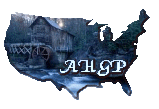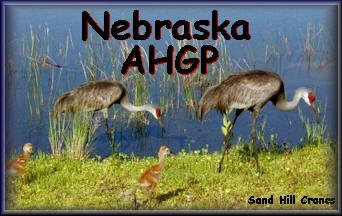Stories of Early Nemaha County Settlers
F. L. Woodward Tells Of Aspinwall and
Nemaha City
My father was Manson J. Woodward, and my
mother's maiden name was Fannie D. Abel. They lived at Concord,
Massachusetts, where father was a carriage and coach trimmer.
They came to Galena, Illinois, then to Des Moines and finally to
Aspinwall in 1864, when I was seven years old. A relative had
come there first, and my parents talked it over and decided to
come. Father opened up a harness shop.
Aspinwall at that time was a town of
about five hundred people. The town site was owned by a company,
General James W. Denver, Louie Neal, and Rumback and Ballard
being members. During 1864 there was a good deal of trouble over
titles. The town was on a boom. One of the best stores was run
by Ed Weisenreder, who had as many as seven clerks. He not only
sold goods, but he bought grain and was quite a shipper.
Aspinwall had the best steamboat landing on the river. An eddy
cut into the bank and made deep water right up to the wharf.
There was a big trade from inland. Other business men at that
time, as I remember, were J. S. Minick, general store; Burl
Hoover, general store; J. W. Thurman, general store; J. W.
Worthing, wagon maker; J. W. Mitchell, hotel; Dr. Baker,
physician; and there were three or four saloons. One saloon was
run by Adolph Herman and another by George McGathney. There was
also a distillery near town.
Henry Hart, a homesteader, took charge
of the lands belonging to Ben Holladay, of Denver. General
Denver had a large amount of land near Aspinwall, and the Denver
estate still has it. Rumback was Denver's father-in-law.
In the matter of shipping Aspinwall
overshadowed Brownville and Nemaha. Much trade came from over in
Pawnee. I have seen in town sacks of corn piled the length of
three blocks, and three sacks high.
A railroad finally went down the other
side of the river and crippled Aspinwall, and the Atchison and
Nebraska came up the Nemaha to the south and took off a lot more
trade. There was much agitation for a road running down the
river to Aspinwall, but it came to Nemaha, which was only four
miles away, and that was the finish of Aspinwall. Some of the
buildings were moved to Nemaha, and many were torn down or moved
out onto farms. There are only two houses on the site of the
boom town now. The Denver estate and Dr. Gandy now own the town
site.
There were in the early days several
attempts to run newspapers at Aspinwall. Dr. Holladay moved the
Nebraska Herald down from Nemaha about 1860, and others tried
it.
Aspinwall was not a Sunday school sort
of a town. Even at its most prosperous time it never built a
church. The saloons furnished the excitement. Sometimes there
were efforts to divert trade to other nearby towns. San
Francisco started up right in sight, and Hillsdale was only a
small distance away. St. Deroin was eight miles south and Nemaha
was in plain view four miles north. It was a great time to boom
new towns, in the sixties.
Once in about 1867 we went to Rulo by
way of Arago. I was ten years old, and I thought Arago was a
fine big town. Rulo was quite a shipping point, and there were a
good many Indians around there. Father continued in business at
Aspinwall until the town died, in the seventies. Then he moved
to Kansas City.
In 1875, when I was eighteen, I married
Martha Tidrow, daughter of a storekeeper. I had quite a time
getting the license. When I went to Brownville after it the
county judge. Dr. McComas, looked me over and told me I was in
the wrong place. Said I was too young to get married. This
worried me, but I talked politics with the judge and told him
politics at Aspinwall was all his way, so he concluded I was all
right to get a license.
I worked in the store three years and
then took up the real estate business in which I have continued
to the present time. John L. Carson had bought the Holladay
land, and I took charge of it.
About 1888 I moved up to Nemaha. It was
a poor town then, not so good as it is now. There were three
saloons, but legitimate trade was light. There were no decent
sidewalks. I came up here because of tile schools, as I had two
boys.
In the old days the liquor element was
mighty strong in Aspinwall. Dr. J. N. McCasland of Pawnee came
down here to organize a Good Templars lodge, and they threatened
to throw him in the river. When I moved to Nemaha the fight
against the saloons was going on. I foolishly believed in the
saloon system at that time. On the streets I had argued that,
inasmuch as we were only getting ten cents a bushel for corn, if
the country went dry we wouldn't get anything for it. But I got
tired of liquor domination and helped to put it out of Nemaha
after all. At that time the school district was $4,000 in debt.
Without saloons it has built a good school building and has
money in the treasury.
At Aspinwall, before the town died, I
was on the school board. Weisenreder and another older man,
Jerry Marlatt, were the other members. One day a young fellow
came along and applied for the school. The two old members did
not take to him because he was so young, but I liked him, and
talked them into the notion of hiring him. The new teacher and I
became great friends and have kept up that friendship ever
since. His name is John H. Morehead, recently governor of
Nebraska.
Morehead taught school in town a few
months and boarded at Weisenreder's. It was noticed that one of
the Weisenreder girls was his favorite. Next he taught a term
out in the country and then came to town and married Miss
Weisenreder. The parents of the Weisenreder girls were Catholics
and objected to taking Protestants into the family. But the
girls did not want to be Catholics, and they had their way when
it came to marrying.
Weisenreder had made money and went out
of the store business when the town declined, and later went to
California. I think he lost most of his wealth in unfortunate
speculations.
We had two boys and one girl. Both boys
are at Kansas City. Charles M. is on the board of trade and
Leslie is a druggist. Marie is now attending school at Kansas
City. My wife died in 1910.
Nebraska
AHGP

Source: Nebraska History and Record of Pioneer Days, Volume I,
Number 1, Published Monthly by the Nebraska Historical Society,
February 1918.
Nebraska Links

Hosted Free |
 |
Please stop by again!!
Copyright August © 2011 -
AHGP The American History and Genealogy Project.
Enjoy the work of our webmasters, provide a link, do not copy their work.
|
![]()

![]()